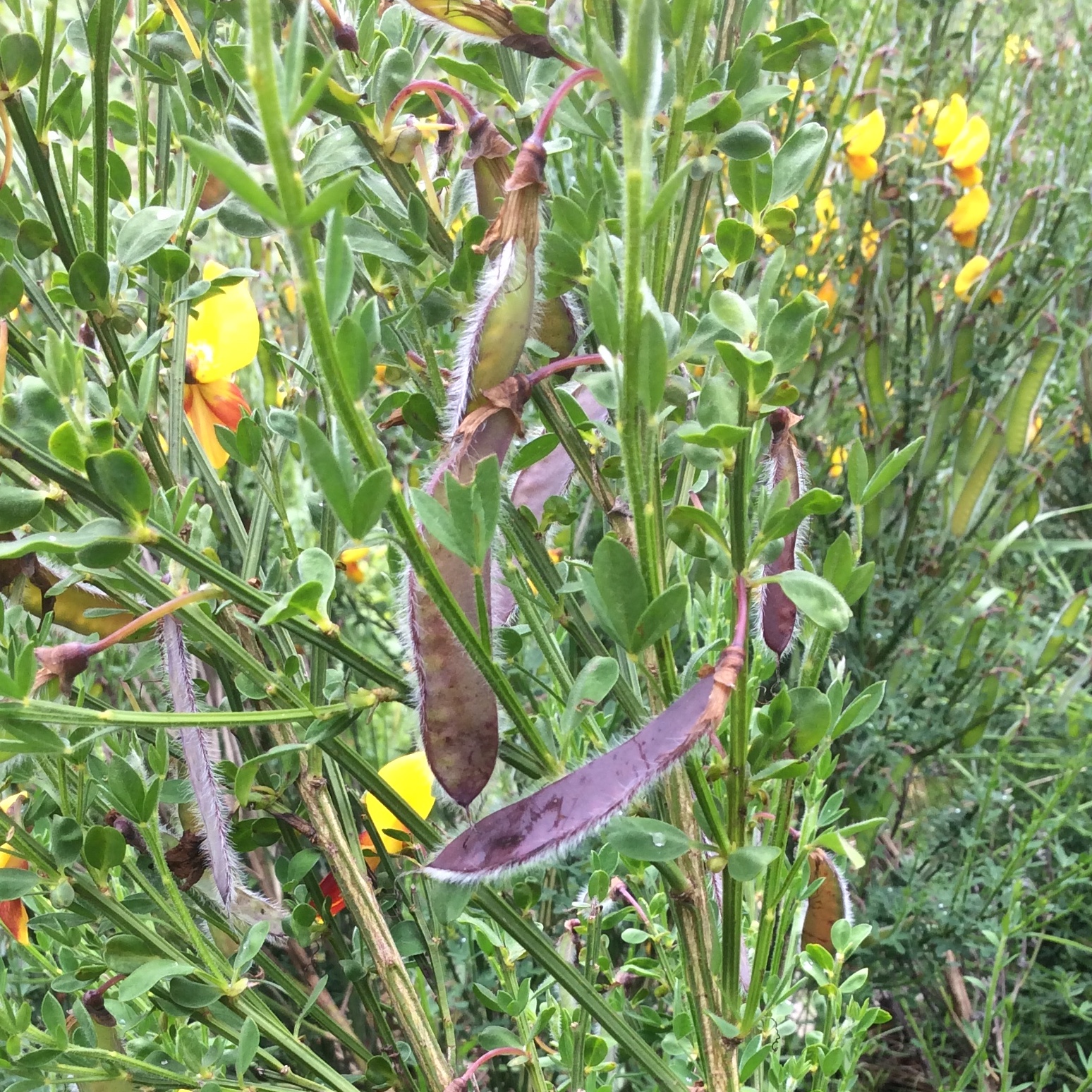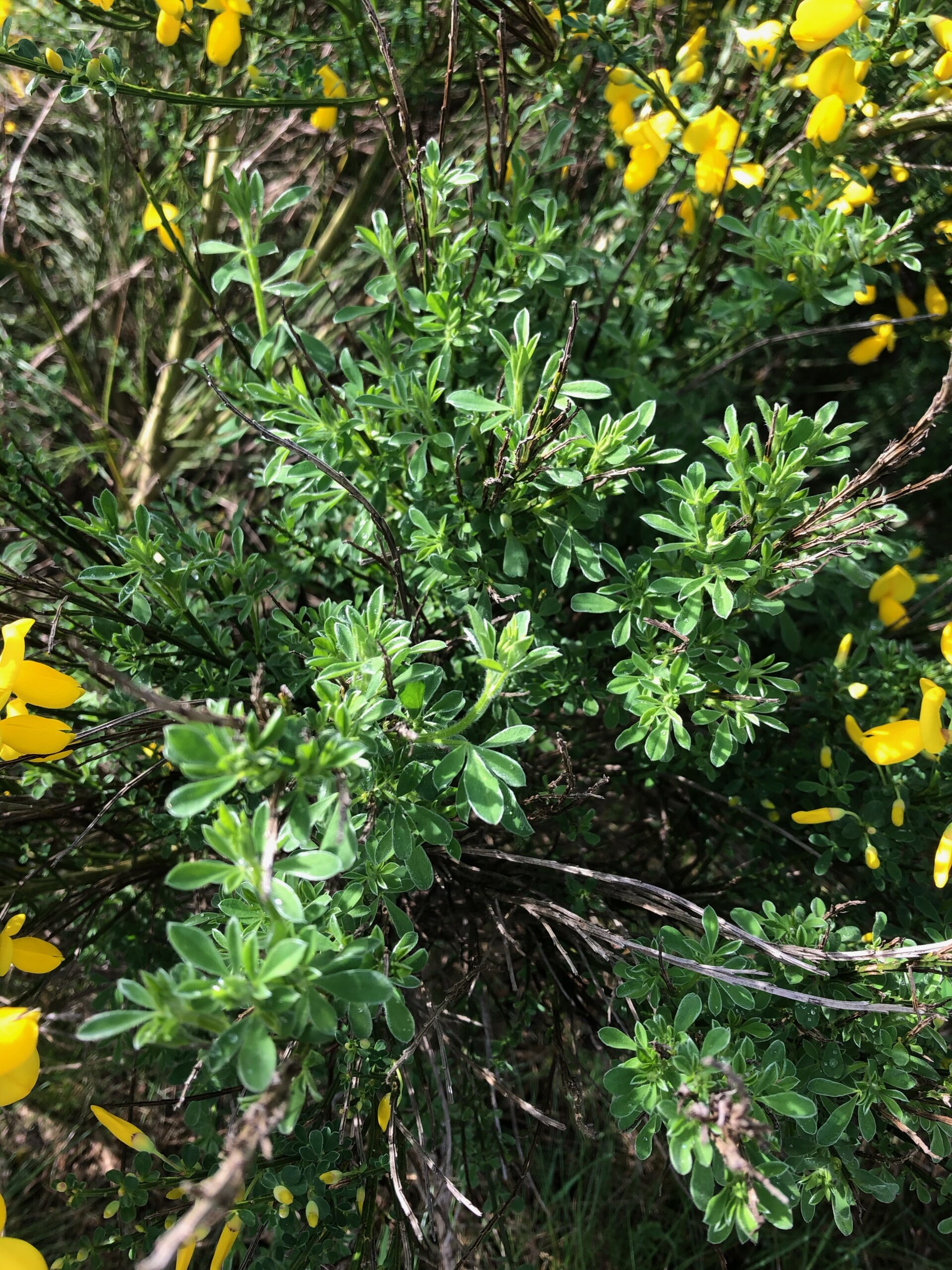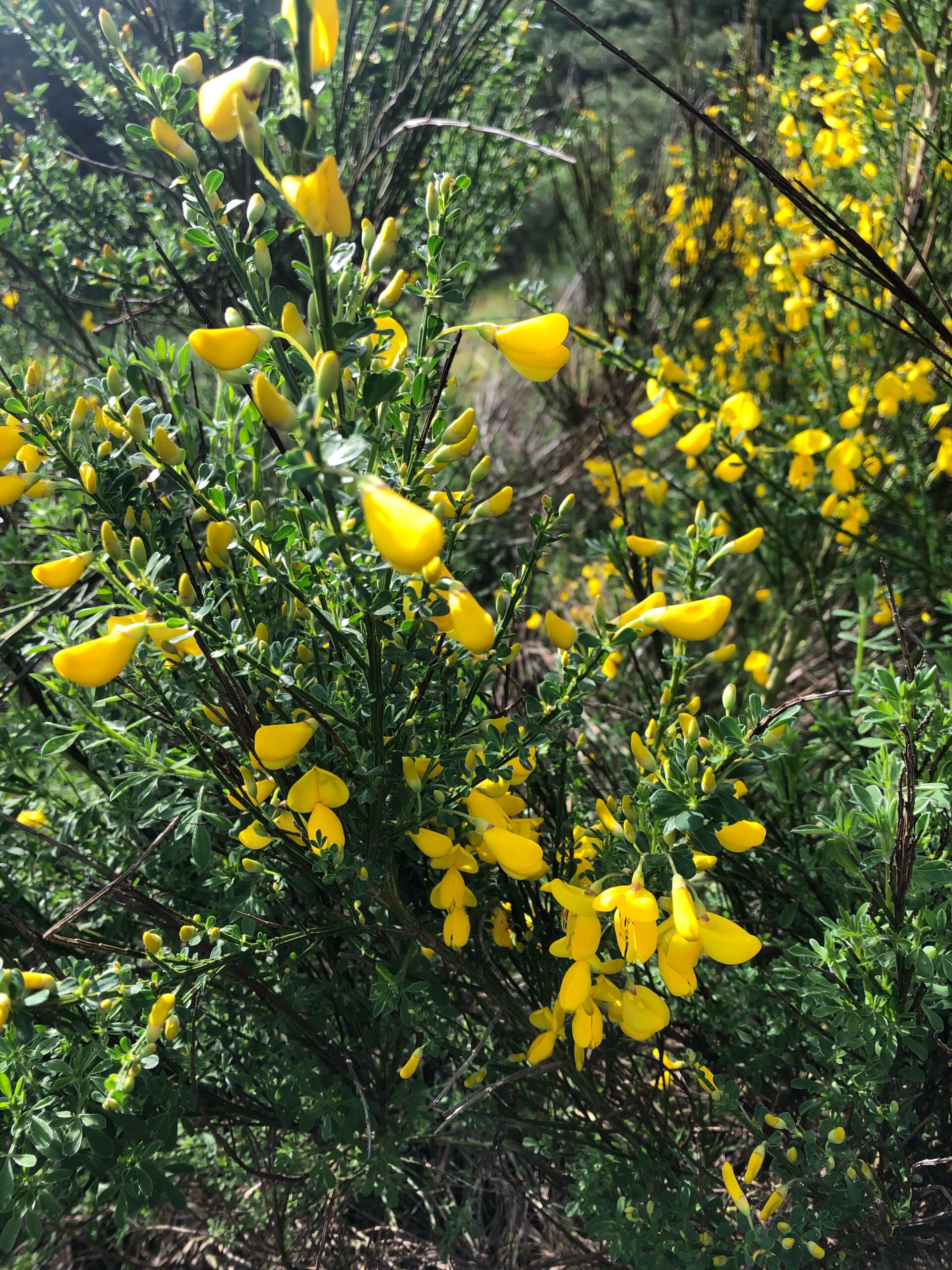Cytisus scoparius
Description
- Yellow pea-like flower, sometimes with a red marking.
- Grows one to three metres tall.
- Stem is woody – newer growth is green and has ridged edges.
- Seedpods are initially green and turn brown to black as they mature.
- Seedpods dry in late summer, become curled and burst open projecting seeds up to 5 metres.
Consequences of invasion
- Takes over rangelands and plantations resulting in decreased crop yields and plantation failures
- The plant is very flammable and the buildup of dead material in dense patches can create a fire hazard.
- Obstructs driver views on roadsides
- Scotch broom outcompetes native species which affects the food chain, and can negatively impact rangelands and agricultural areas.
Introduction and spread
- Originally introduced as an ornamental plant, this plant has become invasive and spread across southern BC.
- Seeds can be transported by travelling on machinery, boots/clothing and vehicles.
- When seed pods burst, the seeds can travel up to 5m which allows the plant to spread rapidly across an area.
- Seeds can remain viable in the soil for many years.
- Activities that disturb soil can encourage seeds present in the soil to germinate.
Status in the CKISS region
- Scotch broom is classified as Contain on the CKISS Annual Priority List.
- The goal is to contain scotch broom to currently infested areas and to not allow further spread.
- If you notice this plant growing outside of its containment areas, please report it!
- To learn more about how CKISS classifies and manages invasive species, see our Invasive Species Priority Lists page.
Integrated pest management options
- Become PlantWise and learn about Grow Me Instead
- Minimize soil disturbances and plant competitive shrubbery such as snowberry, salmonberry, thimbleberry or Oregon grape
- Scotch broom can be hand-pulled if plants are small – with larger plants this can disturb the soil and lead to further infestation.
- For larger plants, cut the plant stem as close to the ground as possible.
- Dispose of plants (especially seed pods) securely and do not compost as the seeds can remain viable in the compost for many years.






